Submitted by Anonymous on
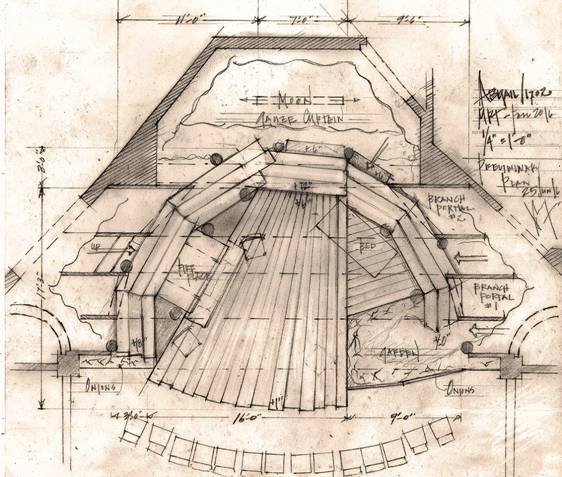

James J. Fenton is a nationally celebrated scenic designer whose productions at MRT have included The Outgoing Tide, The Devil’s Music: The Life and Blues of Bessie Smith, and Mrs. Mannerly.
What was your starting point for the physical world of the play?
I found that this story begins and ends in the Circle in the Woods – and this also provides a ceremonial location for the set to evolve from, a place of protection, mystery, danger and redemption. An emotional, psychological, and physical sphere that has surrounded Abigail her entire life. A place where she goes to hide and then to be free.
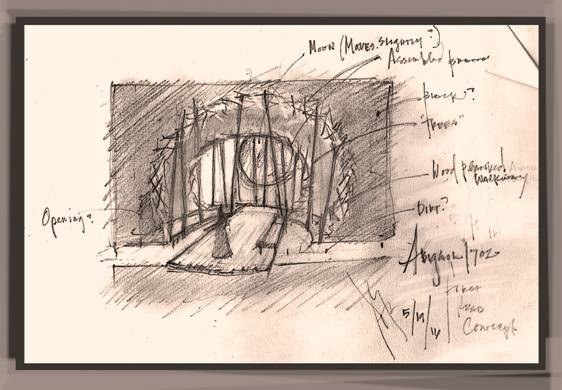
As with The Outgoing Tide, this play is set in real-world locations that are always shifting. What special challenges does that create?
I have attempted to free myself of absolutes insofar as any given location. Abigail seems to slip in and out of a natural chronology in time and space as she reflects on her life throughout the story. I found that visually overlaying her Circle in the Woods (trees, garden, path, and moon) with the interior elements of her home (bed, fireplace, chairs, and floor) helped me to believe that things are not so strictly defined. It creates one of those arcane locations that I find hiking through the forest, where an ancient structure has been re-taken by nature. Something forgotten waiting to tell its tale again.
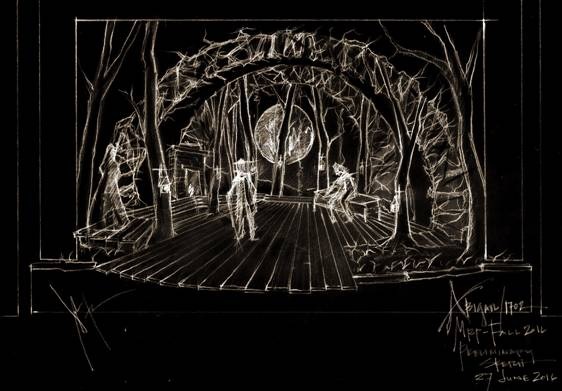
Sean has called you a “master of theatrical realism” in reference to your attention to detail. What details give this set its character?
That’s really quite humbling. I would say I indulge in a certain obsession over the use and treatment of real materials that bring their own textural integrity. Rather than affecting surfaces with overtly scenic paint treatments I try to choose substances that come with their own historic or tactile realism. One example here is the naturally felled trees you see. Also, the prop master Brendan Conroy and I have worked very hard to seek out actual colonial artifacts for the furnishings, set dressing, and properties.
What were your favorite research findings for this project?
Obviously the period and historic location offer a rich and evocative palate to work with. The imagery and literature of Colonial Massachusetts can really transport you. Just simply walking through the woods in our immediate area helps immensely, but honestly it is Roberto’s words that really provided the key directions for me to look. The mood and consequence he provides heavily informed the content and atmosphere of the research, as well as his invocation of circular imagery. This led me towards more ephemeral art installations of natural materials like Andy Goldsworthy and the Land Art movement.
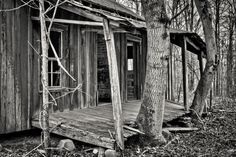
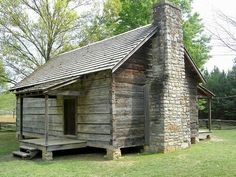
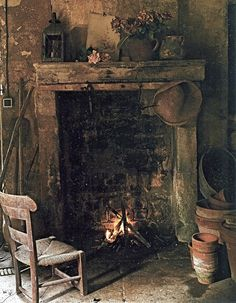
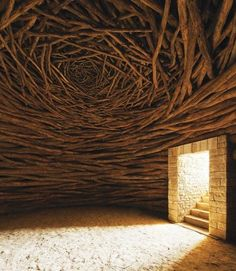
What’s something you’re doing with this set that you’ve never done before?
Well this will be my first forest of real trees… hahaha!
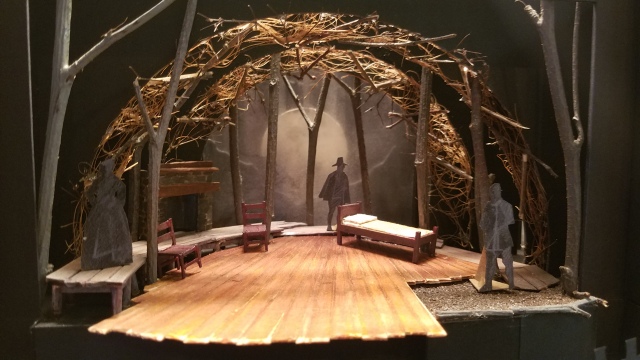
Why do you design for the stage?
That is a question I ask myself over and over again… Designing environments for performance was an inevitable destination. It is beyond just what I love to do, it is something I have always done. I love to tell and be told stories, so I absorb the emotional content of these fictions and develop ceremonial and expressionistic architecture that responds in both the historic and immediate context.
In other words I am a big nerd.
Learn more about James J. Fenton at https://jamesjayfenton.carbonmade.com
See Abigail/1702 at Merrimack Repertory Theatre: http://www.mrt.org/Abigail
